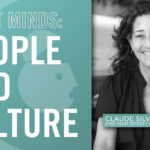By Derren Sequeira, CCO, DiO
“I’ve learned that people will forget what you said, people will forget what you did, but people will never forget how you made them feel.” Maya Angelou’s powerful words will resonate with anyone working as an advertising creative today. Yet, even though emotion is the heart and soul of every successful ad campaign, we overlook it as a measure of ad performance. This is a pity because, by measuring emotional responses and optimising creative accordingly, brands will be able to engage with their audiences in profoundly transformative ways.
The optimisation shift – from clicks to resonance
Today, ad performance is mostly measured by clicks and conversions – a standardised approach that’s resulted in standardised creative. Just as automobiles tend to adopt similar shapes when engineered for optimal aerodynamics, so too has uniform approaches to measuring audience responses led to a homogenised advertising aesthetic. Like cars, not all ads should look or feel the same.
Demographic targeting has also reached its limits. While effective for broad strokes, it often misses the colour and nuance found within groups, leading to ads that don’t quite hit the mark.
In this environment, brand building is more important than ever. The real magic of brand building emerges when we move past mere placement and tap into the deep, emotive chords that drive human connection.
It’s not just about ‘who’ our audience is, but what stirs them. By shifting from demographic checkboxes to exploring what emotionally engages, we not only boost the impact of our campaigns but also breathe new life into the creative soul of marketing.
A gold standard for audience engagement
The advertising industry has zeroed in on the need to capture consumers’ attention. But if brands are truly aiming for impact, they should go further. Measuring attention on its own is not enough, given that attention comes on a spectrum ranging from passive to engaged to highly active. Enriching this spectrum with the real-time pulse of emotional responses allows brands to map audience engagement with unprecedented precision.
This fusion of attention and emotion gives us a powerful new metric: Immersion. This isn’t just measurement; it’s a deep dive into the human psyche, enabled by powerful biometric data. Technologies like facial coding and electrodermal activity (EDA) serve as our guides, translating subtle facial cues and skin conductivity into a vivid portrait of emotional response.
By weaving emotional insights into the fabric of traditional demographic data, brands can illuminate the rich tapestry of human behaviour—unearthing preferences that go beyond age, gender, and income. This deeper, more vibrant data palette empowers creatives to tailor their narratives precisely, crafting messages that resonate with profound emotional depth and authenticity.
Emotional insights are not there to judge or critique creatives. Rather, they serve to amplify the creator’s intent, acting as a companion throughout the creative process. Additionally, it’s important to recognise that not all impactful emotions are positive. Subtler shades of fear, anxiety, or disgust can also reveal how a brand should address and resolve specific problems.
Emotional insights in action
Leading brands are already harnessing the power of emotional connections to elevate their work. This trend shines brightest during Christmas, where emotionally charged campaigns have become a tradition. Now, the challenge for brands is to carry this authentic emotional resonance beyond the festive season, making it a staple of everyday marketing.
Some are already doing so. IKEA Canada, in collaboration with its creative agency Edelman, tapped into a deeply felt concern by Canadians, that they were paying a double tax on 2nd hand goods at a time of increased financial strain on households. By recognising the deep emotions felt by many Canadians, IKEA was able to develop a movement around Second Hand Tax coined ‘SHT’, combining activism with humour, ‘It’s the SHT’, to mobilise the population (35,000 + petition signatories), drive increased sales in IKEA’s 2nd hand store (+192%) and even affect government policy with IKEA invited to attend debates related to the double tax.
Harnessing emotional insights in this way is set to be transformative for brands across numerous industries. The entertainment sector – a veritable factory of emotions – exemplifies this shift. Recently, companies in film and gaming have started to integrate genuine emotional responses into their creative processes. As this trend unfolds, capturing both conscious and subconscious reactions will be crucial to gaining a complete understanding and avoiding costly errors.
The future of ad measurement and creative strategy
Past approaches to measuring emotional responses to advertising have been disappointedly relatively simplistic – reducing rich, nuanced reactions to the act of pressing a “happy” or “sad” feedback button. While this method might suffice for rating motorway service station toilets, it falls woefully short of capturing the complex emotional landscape elicited by powerful advertising campaigns.
The wave of innovation currently reshaping emotional response measurement replaces such crude techniques with highly sophisticated technologies and processes that enable emotion, in all its complexity, to enrich demographic data and provide a fuller understanding of how people react to creative output. This approach goes beyond performance measurement. It offers a powerful new way to empower creatives to do their best possible work.
About the Author
Derren Sequeira is an international partnerships and entertainment executive with a proven track record of building businesses and teams valued at $50M+. With over 20 years of experience at Meta, Google, and Virgin Media, Derren has been at the forefront of digital transformation, pioneering innovative strategies that drive commercial success, across Search and Social Media with brands such as Unilever, P&G, Walt Disney Company and Warner Bros.
During his time at Meta, Derren co-developed the early solutions for combining traditional measurement with Social Media metrics, working with established research providers such as MMM and Dunnhumby. He was also integral to the transition of the Entertainment industry into the mobile advertising space on platforms such as Instagram, establishing research that evolved the strategy of major studios and triggering a major shift to digital across the sector.
As Chief Commercial Officer at DiO, he is focused on pushing the company’s groundbreaking emotional response analytics to brands and agencies. Drawing on his deep expertise in digital media, entertainment, and data-driven marketing, he is spearheading partnerships and revenue growth strategies that help brands and studios better understand and engage their audiences.








